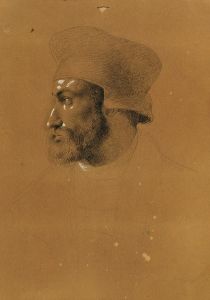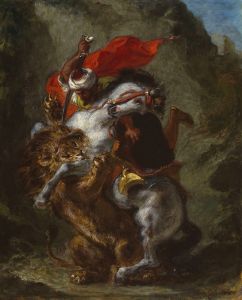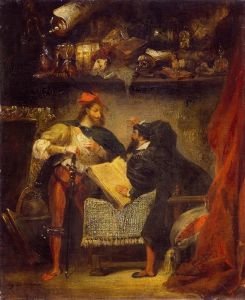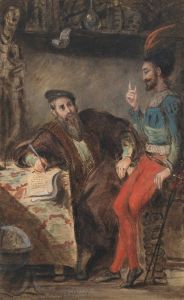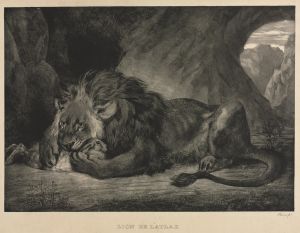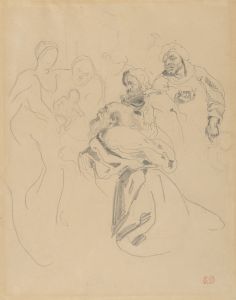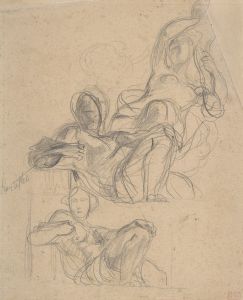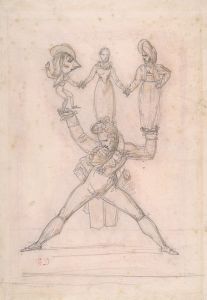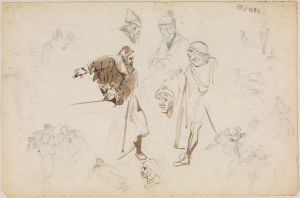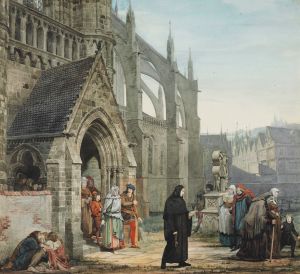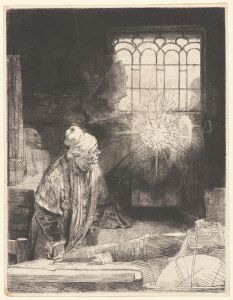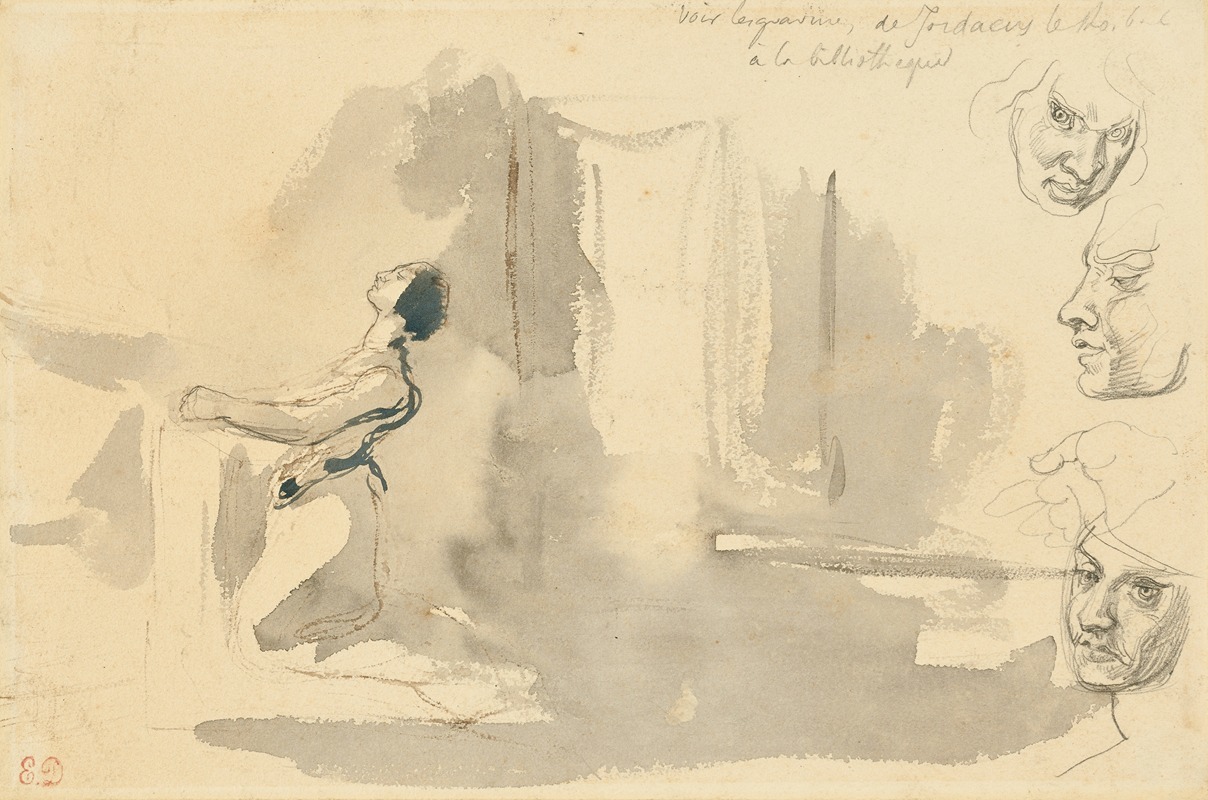
Marguerite in the church with studies of the head of Mephistopheles
A hand-painted replica of Eugène Delacroix’s masterpiece Marguerite in the church with studies of the head of Mephistopheles, meticulously crafted by professional artists to capture the true essence of the original. Each piece is created with museum-quality canvas and rare mineral pigments, carefully painted by experienced artists with delicate brushstrokes and rich, layered colors to perfectly recreate the texture of the original artwork. Unlike machine-printed reproductions, this hand-painted version brings the painting to life, infused with the artist’s emotions and skill in every stroke. Whether for personal collection or home decoration, it instantly elevates the artistic atmosphere of any space.
Eugène Delacroix, a leading figure of the French Romantic movement, is renowned for his expressive brushwork and vibrant use of color. Among his numerous works, "Marguerite in the Church with Studies of the Head of Mephistopheles" stands out as a fascinating exploration of literary themes through visual art. This painting is inspired by Johann Wolfgang von Goethe's "Faust," a seminal work of German literature that delves into themes of ambition, desire, and redemption.
Delacroix's interest in Goethe's "Faust" was part of a broader fascination with literature and drama that characterized much of his work. The story of "Faust" revolves around the titular character, a scholar who makes a pact with the devil, Mephistopheles, trading his soul for unlimited knowledge and worldly pleasures. Marguerite, also known as Gretchen, is a central character in the narrative, representing innocence and purity, and her tragic fate is a poignant element of the story.
In "Marguerite in the Church with Studies of the Head of Mephistopheles," Delacroix captures a moment of intense emotional and spiritual conflict. The painting depicts Marguerite in a church, a setting that underscores her inner turmoil and the moral questions she faces. Delacroix's portrayal of Marguerite reflects his ability to convey complex psychological states through facial expressions and body language. Her demeanor suggests a deep sense of guilt and despair, which is heightened by the sacred surroundings of the church.
The studies of the head of Mephistopheles included in the painting serve as a stark contrast to Marguerite's innocence. Mephistopheles is traditionally depicted as a cunning and malevolent figure, and Delacroix's interpretation is no exception. The devil's presence in the painting, even as a study, serves as a reminder of the ever-present temptation and the consequences of Faust's bargain. Delacroix's skillful rendering of Mephistopheles' features captures the character's sinister and manipulative nature.
Delacroix's work on "Faust" was not limited to this painting alone. He produced a series of lithographs illustrating scenes from Goethe's play, which further demonstrate his engagement with the text and its themes. These works collectively highlight Delacroix's ability to translate literary narratives into visual form, capturing the essence of the characters and their struggles.
The painting "Marguerite in the Church with Studies of the Head of Mephistopheles" exemplifies Delacroix's mastery of Romanticism, characterized by its emphasis on emotion, individualism, and the sublime. His use of color and light, along with his dynamic composition, draws viewers into the emotional depth of the scene. Delacroix's interpretation of "Faust" continues to be celebrated for its artistic and thematic richness, reflecting the enduring impact of both Goethe's literary masterpiece and Delacroix's artistic vision.






